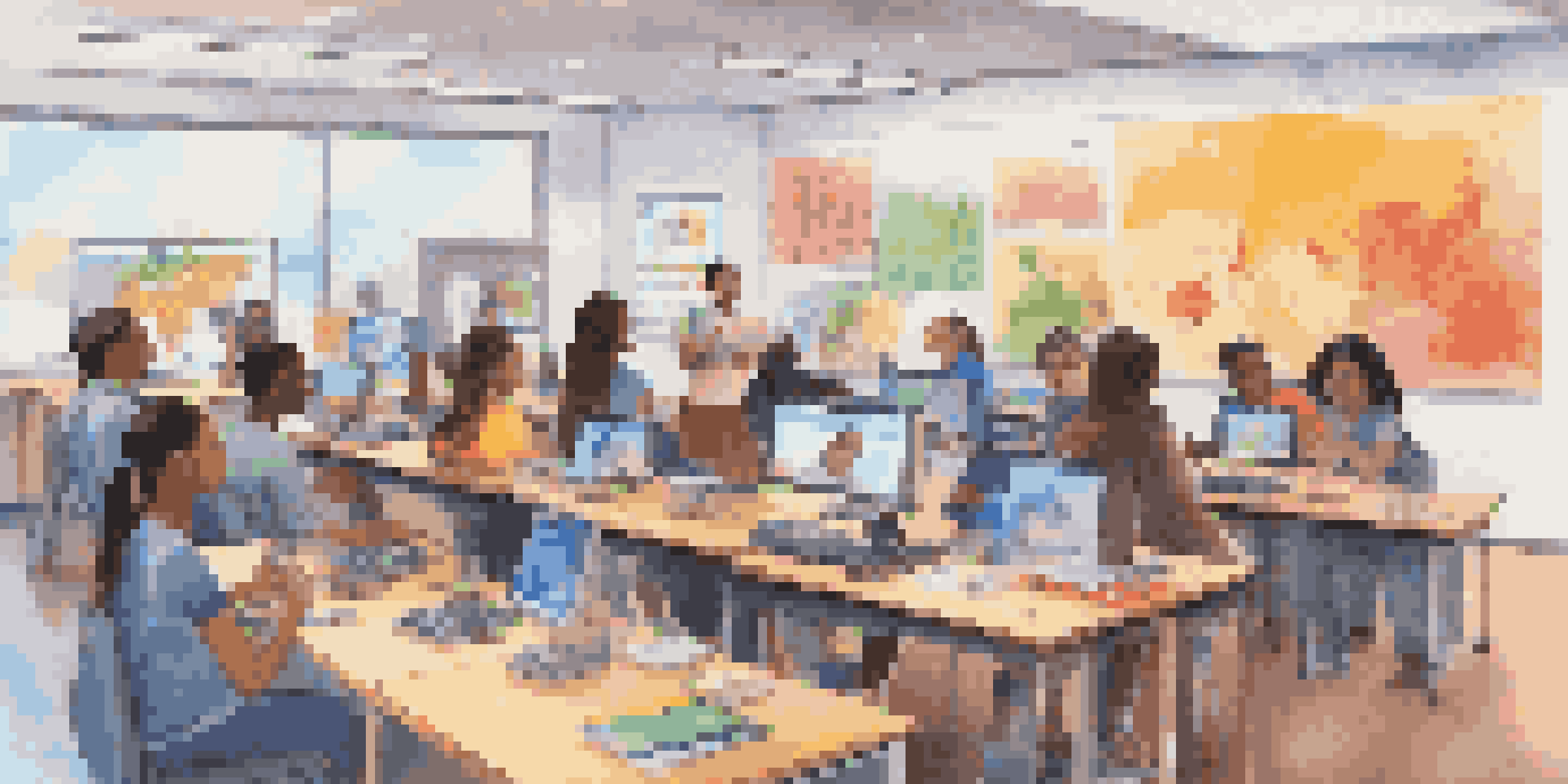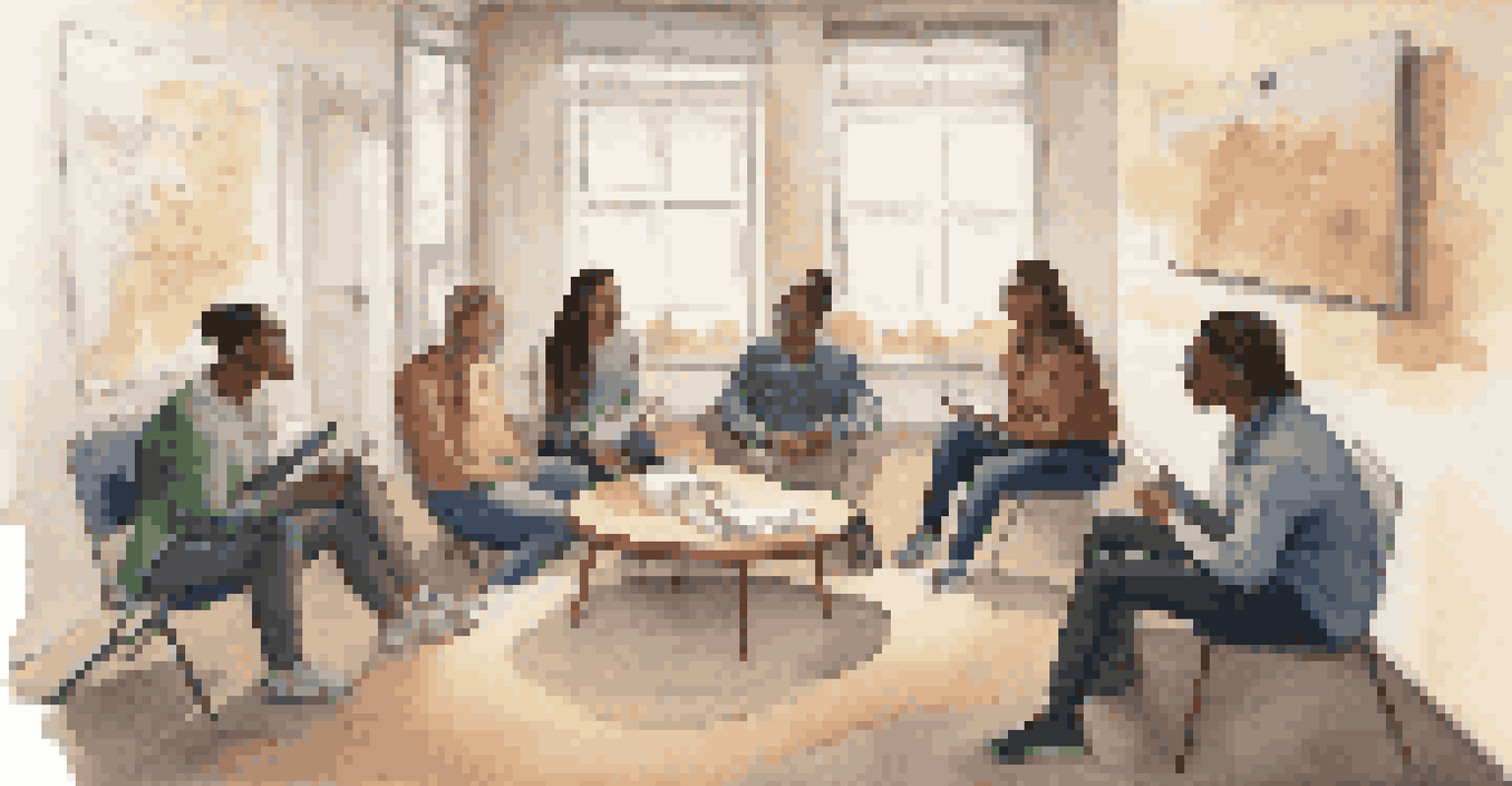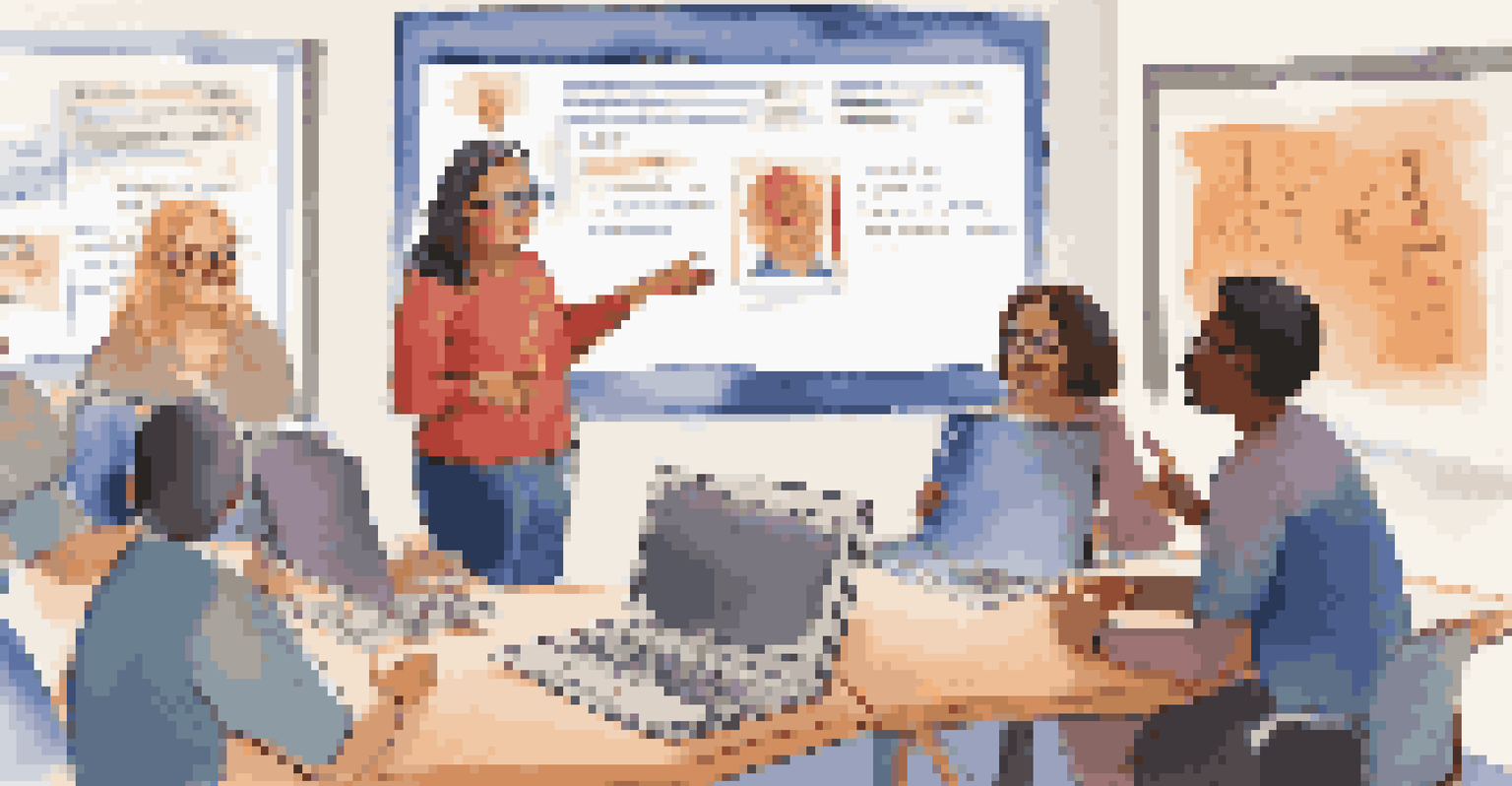Exploring Group Dynamics in Synchronous Learning Activities

What Are Synchronous Learning Activities?
Synchronous learning activities are real-time educational experiences where participants interact simultaneously, often using digital tools. Think of it as a virtual classroom where students can discuss, collaborate, and engage directly with their peers and instructors. This immediate interaction fosters a sense of community and can make learning more dynamic and engaging.
The beautiful thing about learning is that no one can take it away from you.
These activities can take various forms, such as live webinars, group discussions, or collaborative projects. The key aspect is that everyone is present at the same time, which can lead to spontaneous conversations and deeper understanding of the material. This format contrasts with asynchronous learning, where participants engage with the content at their own pace, often leading to more solitary experiences.
Incorporating synchronous activities into a curriculum can significantly enhance the learning experience. They not only facilitate real-time feedback from instructors but also encourage students to share insights and ask questions, creating a more interactive atmosphere.
The Importance of Group Dynamics in Learning
Group dynamics refer to the interactions and behaviors that occur within a group. Understanding these dynamics is crucial because they can significantly influence how effectively a group learns together. Positive group dynamics can lead to increased motivation, collaboration, and a shared sense of purpose among participants.

For instance, when students feel comfortable expressing their thoughts and opinions, they are more likely to engage in discussions and contribute meaningfully. This sense of safety can be cultivated through icebreaker activities or establishing ground rules that promote respect and open communication. In contrast, negative dynamics, such as competition or dominance by a few individuals, can hinder participation and learning.
Role of Synchronous Learning
Synchronous learning fosters real-time interaction, enhancing engagement and community among participants.
Ultimately, the success of synchronous learning activities often hinges on how well group dynamics are managed. Educators play a vital role in facilitating these interactions, ensuring that all voices are heard and valued.
Key Factors Influencing Group Dynamics
Several factors influence group dynamics, including group size, diversity, and the roles individuals play within the group. Smaller groups tend to foster more intimate discussions, allowing every member to contribute without feeling overshadowed. On the other hand, larger groups can bring a wealth of perspectives but may also lead to some voices getting lost in the shuffle.
Alone we can do so little; together we can do so much.
Diversity within the group can enhance creativity and problem-solving as different backgrounds and experiences contribute unique viewpoints. However, it can also present challenges, such as miscommunication or varying expectations. Understanding these factors is essential for educators who aim to create a balanced and effective learning environment.
Another critical element is the roles that individuals assume in group settings. Whether someone takes on the role of a leader, facilitator, or mediator can shape how discussions unfold and influence overall group cohesion.
Creating Effective Synchronous Learning Groups
Designing effective groups for synchronous learning involves thoughtful planning and consideration of group composition. Consider mixing students with varying skill levels and backgrounds to encourage diverse contributions. This approach not only enriches the learning experience but also helps students learn from one another.
It's also important to establish clear objectives for each group activity. When participants understand the purpose and expected outcomes, they are more likely to stay focused and motivated. This clarity encourages accountability and ensures that everyone is working towards a common goal.
Impact of Group Dynamics
Understanding group dynamics is crucial for effective collaboration, influencing motivation and participation.
Lastly, providing ongoing support and resources to groups can enhance their effectiveness. Regular check-ins, feedback sessions, and access to additional learning materials can help keep groups on track and address any challenges that may arise.
Assessing Group Performance in Learning Activities
Assessing group performance in synchronous learning activities can be challenging but is essential for understanding their effectiveness. One approach is to utilize peer evaluations, allowing students to reflect on their contributions and the dynamics within their group. This feedback can provide valuable insights into individual and group performance.
Instructors might also consider using observation checklists during group activities to gauge participation levels, communication styles, and collaboration. This method not only aids in assessment but also helps educators identify areas that may require additional support or intervention.
Combining self-assessment, peer feedback, and instructor observations creates a comprehensive picture of group dynamics, which can inform future learning experiences and improve overall group effectiveness.
Overcoming Challenges in Synchronous Learning Groups
Despite the many benefits of synchronous learning, challenges can arise within group dynamics. Common issues include lack of engagement, conflicting personalities, and varying levels of commitment. Identifying and addressing these challenges early can prevent them from derailing the learning experience.
One effective strategy is to establish ground rules at the outset, creating a framework for respectful communication and collaboration. Encouraging open dialogue about any conflicts or concerns can foster a culture of trust and accountability, allowing groups to navigate challenges more effectively.
Strategies for Effective Groups
Careful planning and clear objectives are essential in creating effective synchronous learning groups.
Additionally, providing resources for conflict resolution and team-building activities can help strengthen group cohesion. When students learn to work through differences constructively, they not only enhance their group experience but also develop valuable interpersonal skills.
The Future of Synchronous Learning and Group Dynamics
As education continues to evolve, the role of synchronous learning and group dynamics will likely expand. Advances in technology are making it easier to connect participants from diverse locations, creating new opportunities for collaboration and learning. This shift emphasizes the importance of understanding group dynamics to maximize the benefits of these interactions.
Moreover, the integration of artificial intelligence and adaptive learning systems may offer personalized learning experiences that cater to individual preferences and learning styles. This could lead to more effective group compositions, enhancing the overall learning experience.

Ultimately, the future of synchronous learning will require educators to stay attuned to the complexities of group dynamics, ensuring that all students can thrive in collaborative environments. By embracing these changes, we can create more enriching and engaging learning experiences for all.